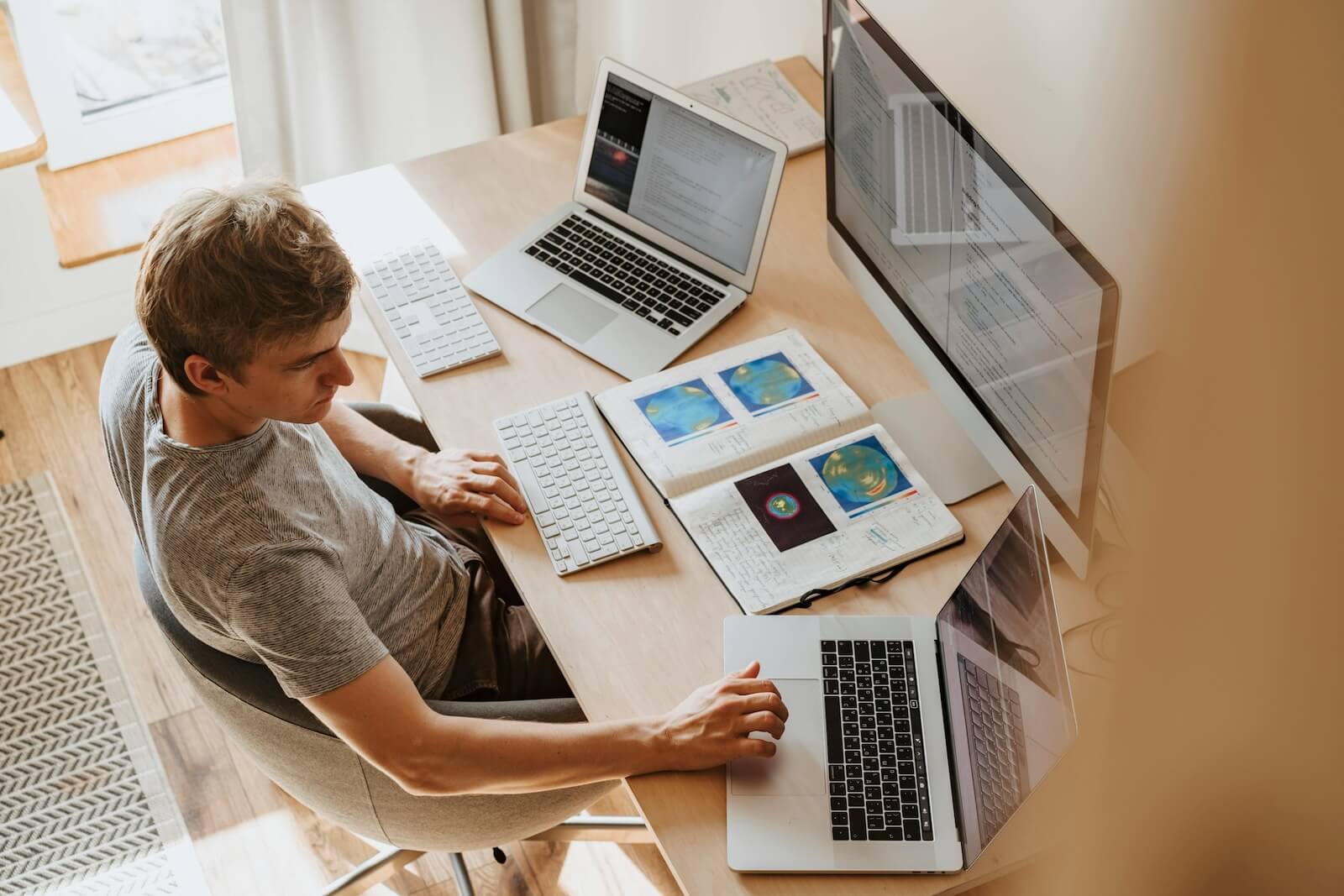Your workspace plays a huge role in how productive and focused you feel throughout the day. An organized home office can be the difference between a productive work session and hours lost to distractions. Working from home often comes with challenges — cluttered desks, misplaced items, and a lack of defined boundaries between work and home life. It’s hard to stay focused when your space is a mess.
Below, we’ll discuss the steps you can take to organize your home office, from decluttering and choosing the right furniture to maximizing storage solutions and establishing an organizing routine. If it’s time to re-invent your home office, keep reading!
Start with Decluttering
The first step toward having an organized space is to declutter it by taking stock of what you actually use in your home office. Things you likely need in an office may include a desk, chair, computer, monitor, and other items necessary for your work. Focus on keeping only the necessities within reach — if you don’t need something often, you can put it in a drawer or on a shelf.
Aside from the essentials, chances are you’ll realize how little you need to do your work and how everything else is unnecessary. While you may want to keep a few sentimental items, like pictures of your family or mementos that hold personal value, you’ll want to get rid of random knick-knacks, old papers, and extra office supplies. These items only crowd your space and make it harder to focus. Sort unwanted items into four piles: keep, toss, donate, or store (you may also want a fifth pile of paperwork to shred). This helps you understand your clutter and what you should do with it.
Decluttering is useful, but it’s easy to slide back into old habits. If you start adding items back into your space without evaluating its necessity, you’ll end up back in square one. Instead, adopt a “one in, one out” rule, meaning you remove something every time you bring something new into your office.
Choose the Right Furniture
There are two pieces of furniture you need in your office: a desk and a chair. What desk or chair you get depends on your budget and taste, but its primary function is to meet all your work needs. If you use two monitors or need the space to draw or write, consider getting a desk with a larger surface area to accommodate all your supplies and tools. On that note, a desk with built-in storage is worth considering if you need additional space for supplies. For those concerned with their health, a standing desk is recommended.
The office chair is equally important. Comfort is important, but it’s not the most important factor when purchasing an office chair; that would be the chair’s ergonomics. Ergonomics are more important because they reduce strain on your neck, back, and shoulders, making it possible to sit for long periods.
Maximize Storage Solutions
An office space needs storage, and the best way to do that is to think vertically. Similar to organizing a garage, you’ll want to invest in bookshelves, wall-mounted shelves, pegboards, and hanging organizers to keep items off your desk yet still within reach. Drawer organizers maximize drawer space and keep things tidy. Along with desktop organizers, these are best for small items such as pens, paper clips, sticky notes, and other small office supplies you want to keep handy. We recommend keeping as many items in your desk drawers vs. on your desk to keep your workspace clear.
Optimize Your Workspace for Productivity
Decluttering and implementing storage solutions are just the start. The next step is to optimize the space, which is especially important in smaller spaces. Start by creating distinct zones for different tasks. You can designate one area for computer work and another for reading or brainstorming. With this setup, you can train your brain to switch gears when stepping into the different zones.
A tangle of wires can quickly make your space feel chaotic, which is why cable management is so important. Aside from causing stress, a mess of cables can also be unsafe, causing you to trip when walking around your space. Use cable organizers, zip ties, or clips to keep cords tidy and out of sight.
Lighting is functional, but it also provides mental benefits that can help you be more at ease and focused. Natural light is ideal for boosting focus and energy, but that may not always be an option. A good alternative is smart lighting that can recreate daylight, or it can also be used to set the mood — smart LED lights can be programmed to produce different colors and patterns. A good, strong desk lamp is also necessary to help with eye strain.
Establish an Ongoing Organization Routine
Maintaining an organized and productive office space requires continuous effort. The best way to do this is to set aside a few minutes at the beginning or end of each day to tidy up your desk and the rest of the office. Return out-of-place items back to their original place and sweep or vacuum if you have the time. If every item in your workspace has its place, this should be easy to do quickly!
Organize Your Home Office Space Today
A well-organized home is the key to reducing stress, boosting productivity, and staying focused on your work. You can create a productive workspace by decluttering the space and being mindful of furniture, storage, and designated areas for different tasks. You can start small and keep whatever works for you. Soon enough, you’ll be in deep focus for longer periods.Ready to transform your home office? Contact Clutterless Home Solutions today to book an appointment with one of our professional organizers. We can help you transform your messy, chaotic workspace into one you’ll love working in.

